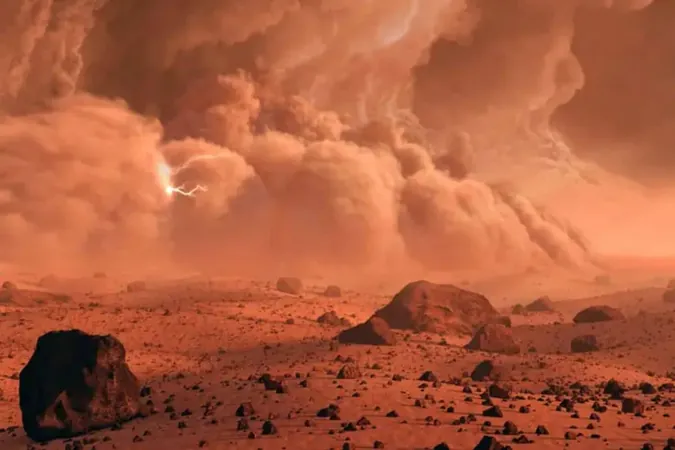
Shocking Revelations: Mars Dust Devils Could Spell Doom for Rovers!
2025-03-25
Author: Ling
Mars has always ignited the curiosity of space enthusiasts and scientists alike.
Recent discoveries suggest that the Red Planet's dust devils may pose an even greater threat to exploration efforts than previously thought. These swirling whirlwinds of soil, much like those on Earth, could jeopardize future missions with their unusual and potentially harmful behaviors. In a groundbreaking observation in 2021, NASA's Perseverance rover captured mysterious sounds linked to these dust devils, raising alarming concerns about the risks they present.
Unraveling Mars' Dust Devils
On Mars, dust devils arise when sunlight heats the surface, causing air to rise and whirl in spirals. Unlike their Earthly counterparts, Martian dust devils benefit from the planet's thin atmosphere, allowing them to persist longer and gain extra strength. Although dust devils on Earth are generally harmless, on Mars, there's a startling twist: they may generate dangerous electrical discharges.
The Shocking Discovery: Electrical Activity Unveiled
The unusual sounds recorded by Perseverance were initially puzzling, but researchers soon linked them to electromagnetic activity. A study led by Baptiste Chide from the Institute of Research in Astrophysics and Planetology revealed that these sounds likely arose from electrostatic discharges. As the dust devil's electric field collapses, it unleashes energy akin to lightning on Earth. This revelation suggests that Martian dust devils are not merely atmospheric phenomena; they might be electrically active storms in disguise.
How Do They Generate Shocking Discharges?
The process begins as the dust devil spins and gathers dust particles, leading to a charge separation within the vortex. Larger particles take on positive charges while smaller particles, being lighter, acquire negative charges as they are propelled higher. This creates an electric field with the potential to release energy in sudden bursts—much like lightning. With the unique conditions on Mars, these dust devils can accumulate significant electrical charges, making their discharges potentially stronger and more frequent than those observed in Earth’s dust storms.
A Looming Threat to Robotic Explorers
This newfound understanding of electrical discharges is concerning for NASA's Perseverance rover, along with other robotic missions exploring Mars. The sophisticated electronics that govern these machines are crucial for their operation, and a discharge from a nearby dust devil could wreak havoc, damaging or disrupting their functionalities. While rovers are engineered to withstand extreme Martian environments, the unpredictable nature of these electrical bursts poses a significant risk, potentially curtailing their operational lives.
Countdown to Human Exploration: New Hazards Ahead
As preparations gear up for human exploration of Mars, these findings signal the need for heightened caution. The unpredictable behavior of dust devils, combined with their ability to emit electrical discharges, provides another layer of complexity that mission planners must navigate. Engineers will need to design future rovers and habitats with the potential for electrical hazards in mind, ensuring the safety and success of those who dare to tread on the Martian surface.
The implications of this discovery are profound, pushing the boundaries of our understanding of Mars and the challenges that lay ahead for explorers. With space missions unfolding at an incredible pace, one can only wonder: will these dust devils become the next unexpected hurdle in our quest to explore the cosmos? Stay tuned, as Mars continues to reveal its secrets!


 Brasil (PT)
Brasil (PT)
 Canada (EN)
Canada (EN)
 Chile (ES)
Chile (ES)
 Česko (CS)
Česko (CS)
 대한민국 (KO)
대한민국 (KO)
 España (ES)
España (ES)
 France (FR)
France (FR)
 Hong Kong (EN)
Hong Kong (EN)
 Italia (IT)
Italia (IT)
 日本 (JA)
日本 (JA)
 Magyarország (HU)
Magyarország (HU)
 Norge (NO)
Norge (NO)
 Polska (PL)
Polska (PL)
 Schweiz (DE)
Schweiz (DE)
 Singapore (EN)
Singapore (EN)
 Sverige (SV)
Sverige (SV)
 Suomi (FI)
Suomi (FI)
 Türkiye (TR)
Türkiye (TR)
 الإمارات العربية المتحدة (AR)
الإمارات العربية المتحدة (AR)